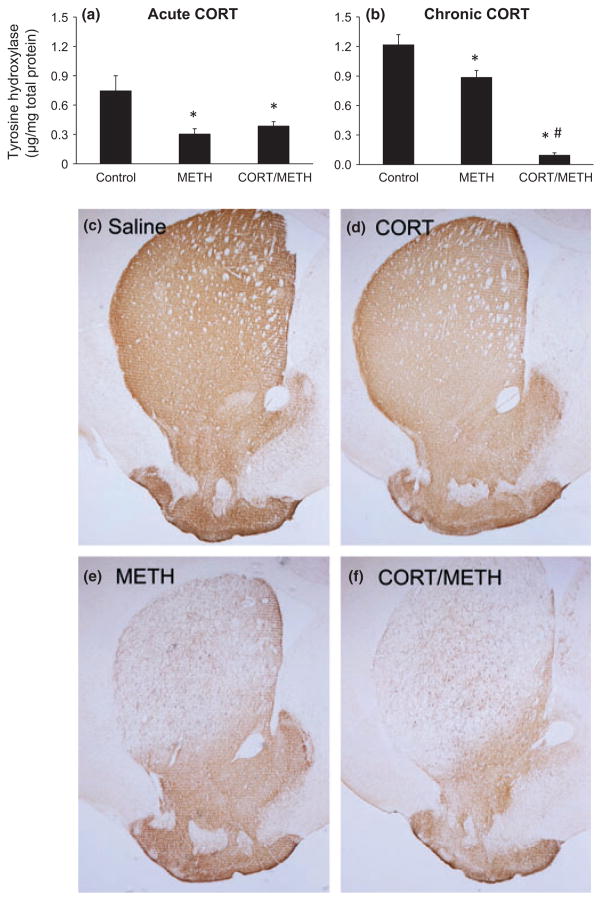Fig. 4.
Chronic corticosterone (CORT) enhances methamphetamine (METH)-induced dopaminergic neurotoxicity in striatum. Tyrosine hydroxylase was quantified by TH ELISA (a and b) and qualitatively demonstrated by TH immunostaining (c–f). (a and b) TH was assayed 3 days after either acute CORT (a) or chronic CORT (b) pre-treatment of METH-exposed mice. Bars represent mean ± SEM (n = 5 mice/group). Statistical significance was measured using a one-way ANOVA with Student-Newman–Keul’s Method post hoc analysis. Statistical significance of at least p < 0.05 is denoted by * as compared to control and # as compared to METH-treated mice. (c–f) Mice were pre-treated with chronic CORT followed by METH or Saline injection. At 3 days post injection of METH or Saline, mice were killed and TH immunolabeling was performed. Photomicrographs are representative images of the striatum at 2× magnification of Saline (c), chronic CORT (d), METH (e), and chronic CORT pre-treated METH (f) mice.

